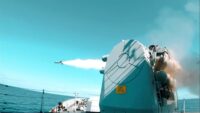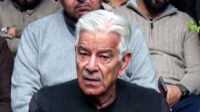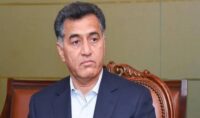By Major (r) Haroon Rasheed — Defense and Strategic Analyst
India’s Air Force may pride itself on its modernization efforts and acquisition of high-end fighter jets like the Rafale, but a troubling reality hides behind the optics of military parades and procurement deals. The Indian Air Force (IAF) has faced a historically high rate of aircraft losses and, more alarmingly, the deaths of trained pilots—mostly in non-combat situations. A deep dive into official and independently compiled data reveals a grim story of institutional negligence, poor training, and inadequate maintenance protocols.
Trump says India not a good trading partner, vows tariff hike in 24 hours
Dost, dost na raha: Congress mocks Modi-Trump ‘special bond’ amid tariff threat
India expands defense capabilities with new military procurement
For more such Opinions & Blogs, click here.
A Bloody Legacy Since Independence
Between 1982 and 1991, India lost 230 pilots—the highest in any non-war period since independence. This loss is even more stark considering that it excludes the tumultuous years of 1962 to 1971, when India fought three wars and lost 333 pilots during active combat operations.
However, the real shock lies in the statistics from peacetime periods. According to a comprehensive study conducted by Colonel (Retd) Ajai Shukla, from 1952 to 2021, India lost 1,305 pilots, and the overwhelming majority were killed in non-combat missions These aren’t casualties of war; these are lives lost during training flights, technical failures, and maintenance-related crashes—many of them are preventable.
Squadron Strength Deterioration
In the past two decades alone, India has lost 14 full squadrons—approximately 255 aircraft—again, primarily in non-combat scenarios. This pattern has weakened the operational capability of the IAF and exposed severe gaps in pilot readiness, aircraft serviceability, and flight safety standards.
Between 2012 and 2021, 73 pilots died—averaging seven pilots per year, again in largely non-combat missions. In the preceding decade (2002–2011), the number was even more devastating: 122 pilots lost. Go further back to 1992–2001, and the death toll climbs to 190 pilots.
Iran rules out direct talks with US, demands compensation for attacks
Pakistan rejects allegations of its citizens’ involvement in Ukraine conflict
Naval Chief awarded Turkiye’s prestigious Legion of Merit
Bharat Rakshak Study: A Staggering Overview
According to data compiled by Bharat Rakshak, an independent digital defense platform, the IAF has lost 1,804 aircraft (excluding helicopters) from 1948 to 2025. Shockingly, only 143 aircraft were lost during combat missions. This means that 1 in every 12 aircraft losses occurred during actual warfare, while the remaining over 90% were destroyed in non-combat situations.
Such statistics point to a chronic and systemic failure in aircraft maintenance, flight safety protocols, and pilot training. These are not isolated events—they are the result of decades-long institutional shortcomings.
Root Causes: Poor Maintenance and Inadequate Pilot Training
The cause of these alarming losses is twofold
1. Maintenance Failures: Many aircraft in the Indian inventory—especially the older MiG variants, often referred to as “flying coffins”—have long suffered from poor maintenance, delayed upgrades, and a lack of spare parts. Despite warnings from within and outside the IAF, these jets continued to fly, risking the lives of skilled pilots.
2. Inadequate Training: Even with advanced simulators and training systems available globally, the IAF has lagged in integrating modern training modules across all bases. Pilots have been thrust into combat-ready roles without sufficient hours in safe flight environments, leading to deadly crashes even during basic exercises.
Punjab govt to convert all orange line stations to solar power
Death anniversary of Quraish Pur being observed today
Indian media revives anti-Pakistan hysteria to justify another misadventure
The Way Forward—or Backward?
India’s current push toward indigenization and acquisition of 5th-generation fighters may grab headlines, but unless the fundamentals of safety, pilot readiness, and fleet maintenance are addressed, the IAF will continue to suffer from internal decay. No amount of high-tech imports or foreign collaborations can substitute for robust training and reliable aircraft upkeep.
The numbers are not just statistics—they are a damning verdict on systemic failures. Behind each figure lies the story of a young pilot who died not in battle but because the system failed him.
For more such Opinions & Blogs, click here.
Protests held in Jammu for restoration of IIOJK’s pre-2019 special status
No end to militancy in IIOJK without thaw in Pak-India ties: Farooq Abdullah
President, PM & armed forces reiterate support for Kashmiris’ right to self-determination
Youm-e-Istehsal being observed across Pakistan, abroad today
1030 Kashmiris martyred in IIOJK since 5 August 2019
Major (R) Haroon Rasheed is a defense and strategic analyst specializing in South Asian military dynamics, deterrence strategy, and defense modernization. He is a member of the Research and Evaluation Cell for Advancing Basic Amenities and Development (REC ABAD).
Stay tuned to Baaghi TV for more. Download our app for the latest news, updates & interesting content!






